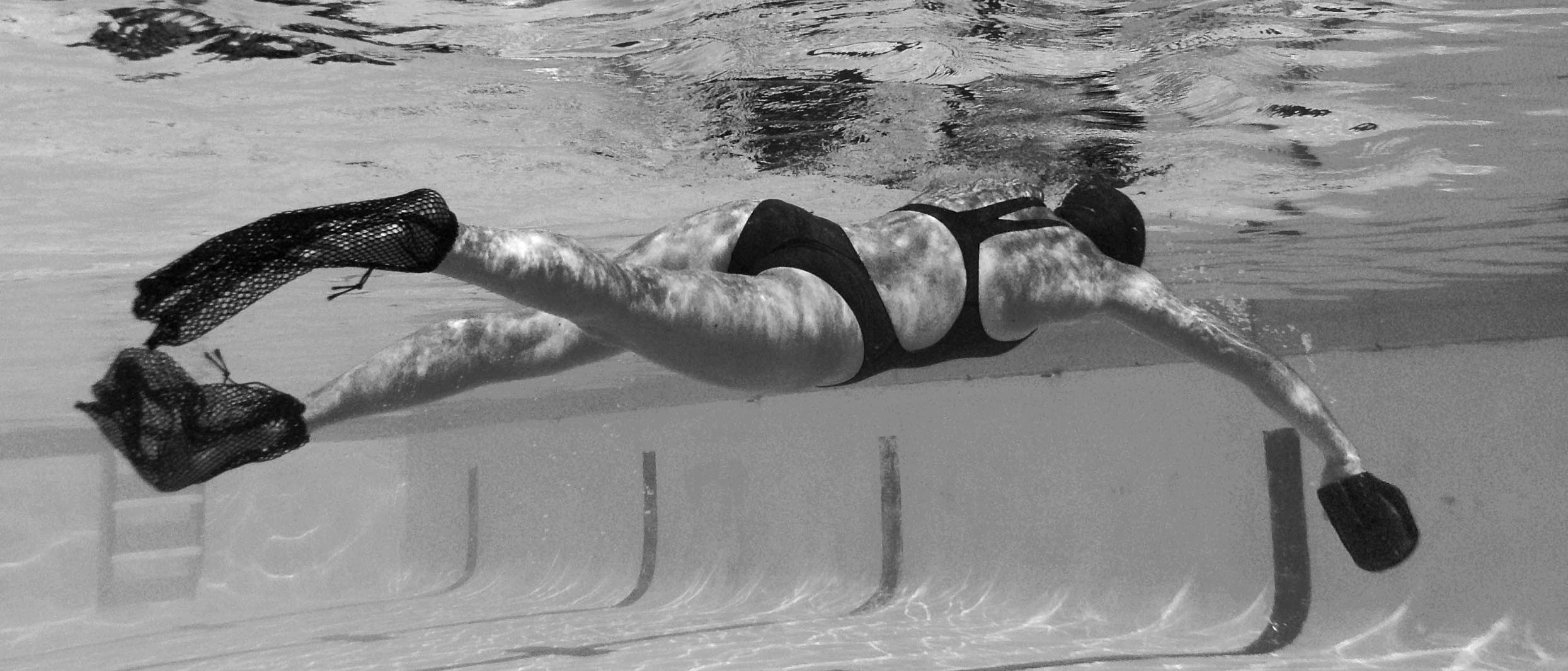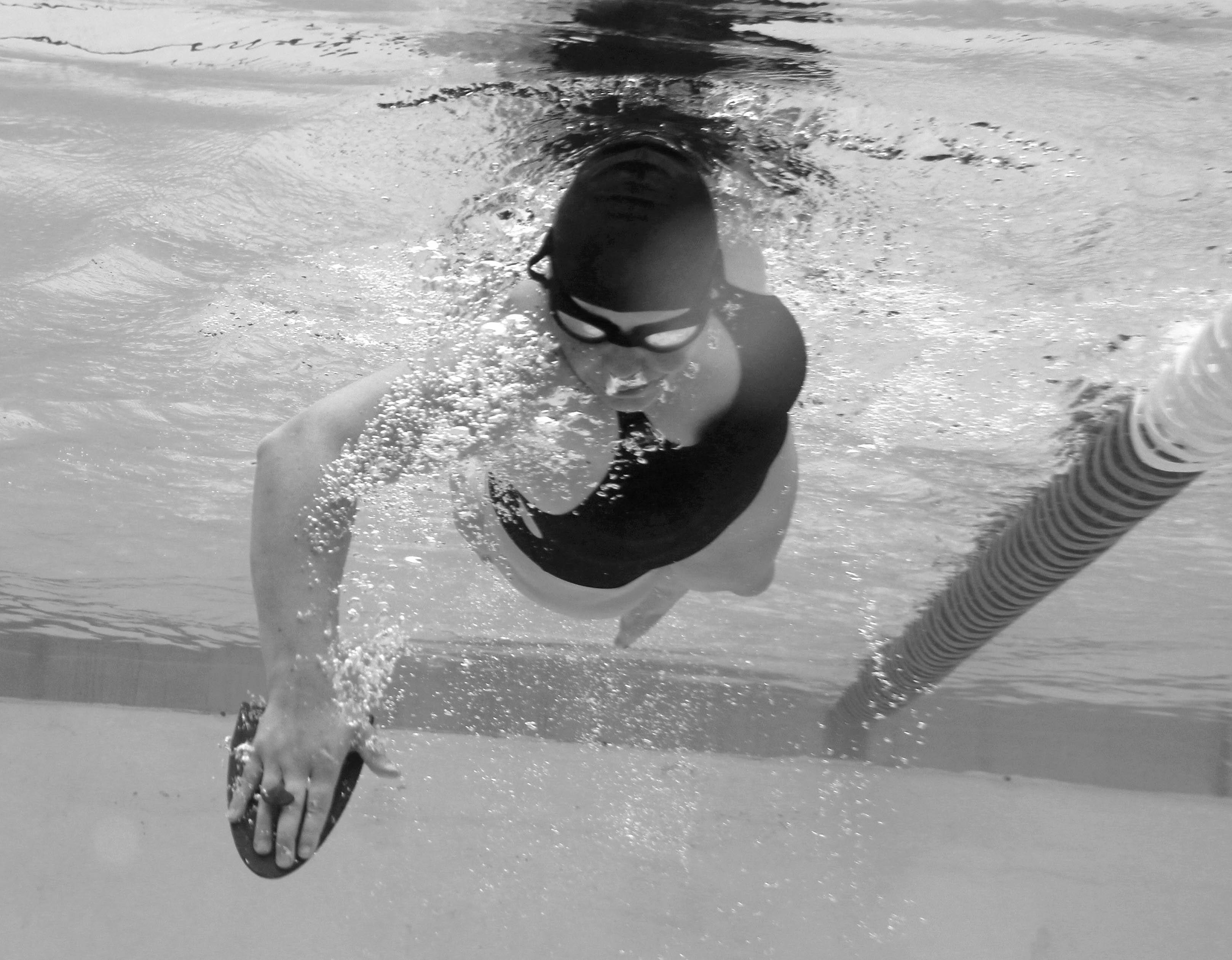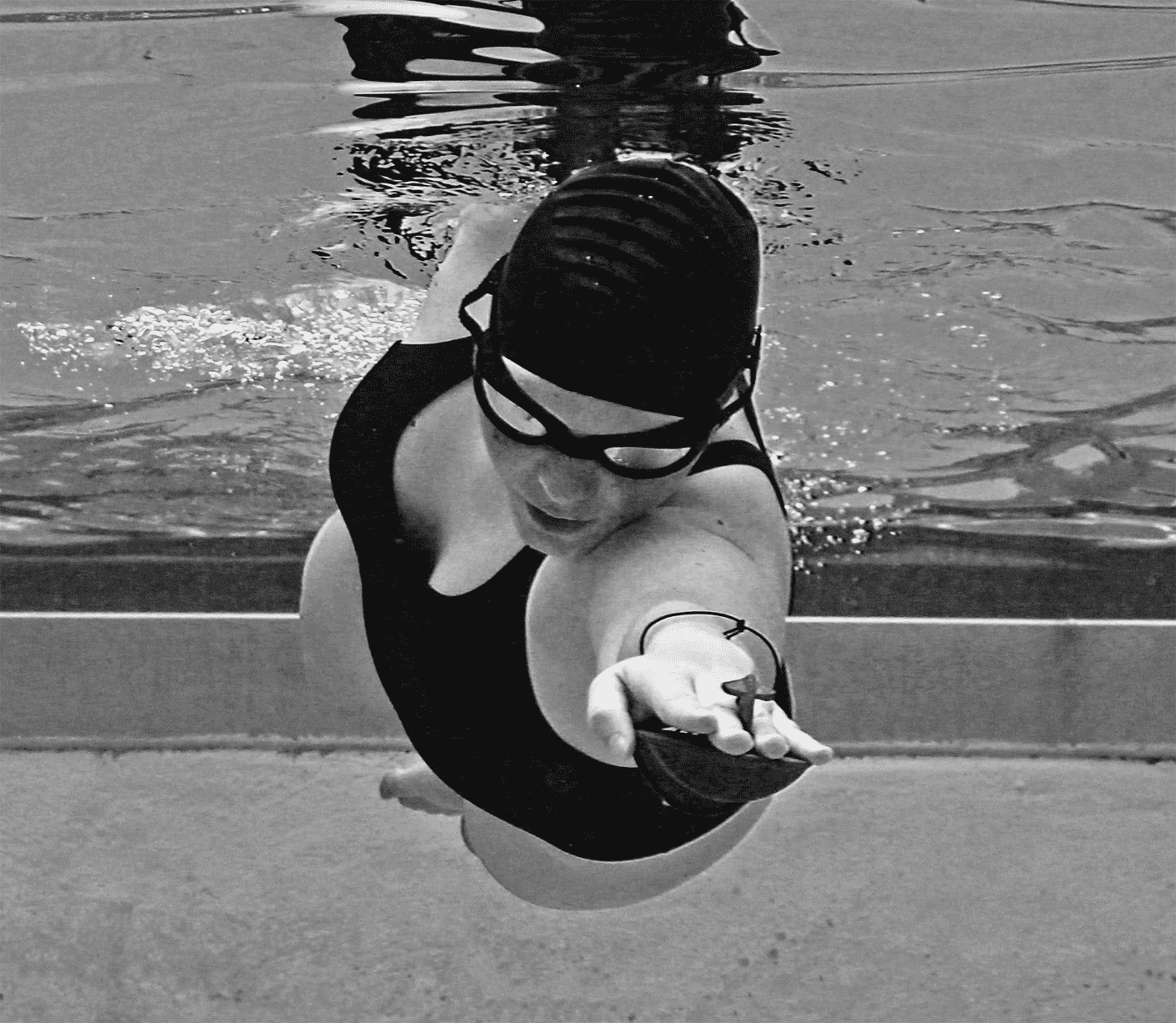F.A.S.T. (Feedback-Assisted Swim Training)
Triathlete Freestyle Training Manual
Our Process:
Swimming efficiently is highly complex and can take swimmers years to master; for triathletes, finding time to have an experienced coach monitor and direct progress is particularly difficult. On-line training courses are endless drills with no assurance that your strokes are improving or changing correctly. Our process is F.A.S.T (Feedback-Assisted Swim Training). It starts with our patent-pending equipment that helps you FEEL many of your stroke problems so you can constantly improve your technique. We combine our equipment with specialized drills to optimize the speed of your improvement. We then provide drills to create an “Intuitive Feel” that actually exaggerates critical techniques WRONGLY so you can learn to feel inefficiency in your strokes. By ensuring you can “Intuitively Feel” what is wrong and optimize what is correct, we’ve created a smooth and quick process to drop swim times in a little as a month.

Process for each step of our program:
- Self-Analysis: Video yourself for slow motion review
- Sensory Drill: Learn what is ‘right’ by doing it ‘wrong’ with drills to FEEL how problems affect speed
- Finds: Review your initial video and compare to our photos to identify your key problems
- Fixes: Apply drills and methods to fix your problems
- Repeat: Return to this process in a month or so
This online manual lays out our program. Our website will not only provide you with the steps in this manual but also includes short videos that teach all the drills and methods involved in F.A.S.T. It can become your ‘go to’ site to constantly improve your technique and workouts.
Let’s Get Started
Slowing Down to Go Faster:
A common mistake with many new swimmers is to try TOO hard. Relax… take your time.
1. Don’t over-kick. This manual will train you to kick correctly and in time with your arms.
2. Don’t try to move your arms too fast. This tends to lead to very inefficient stroke technique which is a lot of energy exertion for little return.
3. If you want to have the time to improve your strokes, you need to able to swim a lot of yardage. If you are struggling and ‘spinning out’ your arms or over-kicking your legs, you will become too exhausted to learn better technique.
Speed Comes Last:
1. First, you need time to develop good technique
2. Second, you need to develop power and conditioning
3. Last, you need to develop tempo and speed
*You cannot skip steps, you cannot try to do all 3 at the same time*
Lesson 1: Front-to-Back Body Balance
Lesson 2: Kick and Ankles
Lesson 3: Arm Recovery and Hand Entry
Lesson 4: The Pull
Lesson 5: Side-to-Side Body Balance & Rotation
Lesson 6: Breathing
Lesson 7: Sighting
Additional Details (such as entering, exiting, swimming around buoys…)
Fine-Tuning:
Swimming ‘perfectly’ is a never-ending process. Even the best swimmers constantly tweak and improve their strokes. The F.A.S.T. process includes some of the very best drills and methods ever used to improve strokes. Many of these drills and methods are used by top Olympians so don’t assume that you are ‘good enough’ to stop using them… keep videoing yourself and being more and more critical of your technique. Mix up your equipment with different drills to constantly feel new details of your strokes. As you fix one thing you will notice the next problem, or create another problem. The body is a whole so one stroke flaw can cause problems somewhere else in the body. For instance breathing to one side easily creates an ‘opposite arm’ problem. Equally, you may need to fix a different problem to help dissolve the problem you are working on. Or as you fix one problem it may expose another. Much like Whack-a-mole, the problems can keep jumping around. But with steady focus you can win the game.
Swimmersbest offers clinics and professional video analysis if you want to take things to the next level.

Power Development:
As you improve your technique, you also need to train your overall power. Many efficient swimmers have no speed or power. Ultimately, it is important to develop power as you improve your technique. The largest risk many triathletes take in their swim program is to constantly repeat block sets that engrain the same stroke rate and tempo. Along with improving your stroke technique, you also need to vary your intensity and power regularly. Be sure to vary your intensity from race pace to recovery pace in order to improve your stroke rate and tempo.
– Swim with the Power Bags by opening the bottoms or by leaving them closed on the bottom to vary your intensity.
– Use a Glide Paddle in each hand for the first part of a set, then switch to Precision Paddles to vary your effort and intensity throughout a set.
– Use the Power Bags as a parachute attached to a belt on your waist to learn how to engage more muscles
– Check out our website with a near-endless list of new ways to vary your training.

Shoulder Strain and Other Ailments:
As with all parts of your training, don’t ignore the little aches and pains. In swimming, pain in your shoulder, back, knee, ankles and arms can be a sign that you are doing something wrong. Just like running incorrectly can cause knee and ankle problems, swimming can also cause chronic problems. The most common cause for swim shoulder pain is to leave the arm flat on the surface during a “glide” phase before the catch and then engaging a straight arm at the start of the catch. Keep the arm at a downward angle so you are setting up the catch in a more natural position. If you are having pain, have a professional review your stroke and details to help you isolate potential problems.



























